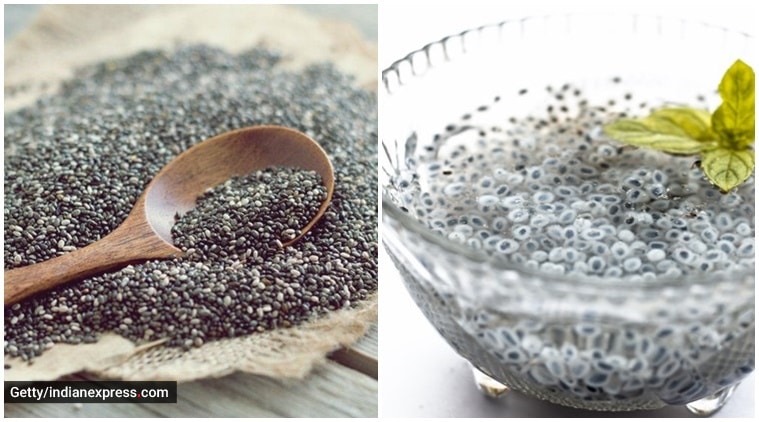Chia vs sabja seeds: Know the difference
The seeds actually look quite different when you compare them. Basil seeds are black, tiny and round. Chia seeds are a bit larger, more oval in shape, and come in a variety of colours, including grey, brown, white and black.

When it comes to immunity-boosting foods, many people wonder whether chia seeds are basil or sabja as both look similar at first glance. Clearing the air, dietitian Lavleen Kaur and nutritionist Pooja Makhija recently shared about the difference between the two on Facebook and Instagram respectively.
So, if you were ever confused about them, here is everything you need to know.
There seems to be a lot of confusion between the two; with some people even thinking they are one and the same, acknowledged Kaur, adding that she receives lots of queries regarding basil and chia seeds largely because they are seen as effective weight-loss aids, when consumed as part of a balanced diet.
In reality, there are a lot of key differences between the two seeds, both experts pointed out.
How should they be consumed?
Basil seeds cannot be eaten without first being soaked in water for at least a couple of hours. However, chia seeds can be consumed both raw and soaked, depending on how you want to use them, said Kaur. Makhija mentioned, “Chia has no taste of its own, thus adapts to any dish, while sabja has the mild flavour of basil.” She also pointed out that chia takes time to absorb water and swell up, while sabja swells up in seconds.
Appearance
The seeds actually look quite different when you compare them. Basil seeds are black, tiny and round. Chia seeds are a bit larger, more oval in shape, and come in a variety of colours, including grey, brown, white and black.
Nutritional content
Chia or sabja seed? Same thing? Not at all? Let’s clear this please. Appearance: Chia never pitch black, mixture of grey, black, white sometimes even brown. Sabja uniformly jet black in colour. On soaking Chia takes time to absorb and swell up. Sabja – swells up in seconds Taste Chia has no taste of its own thus adapts to any dish Sabja has mild flavour of basil Usage Chia can be used raw or soaked Sabja can be consumed only after soaking. Benefits These cousins have some similarity in their benefits. Marked ones are Chia – good source of omega 3, helps stabilize blood sugar, promotes energy and endurance. Sabja – one of the best coolant for the body, good source of iron, combats acidity, relieves constipation. Hope that helps you understand these healthy cousins well! #youarewhatyoueat #foodbethymedicine #nourish #poojamakhija #eatdelete #chia #sabja
A post shared by PM (@poojamakhija) on
Both seeds offer certain nutritional benefits, but it’s generally thought that chia seeds are ‘better’ for you as they contain antioxidants, fibre, calcium, protein and many other key minerals. However, basil seeds contain plenty of iron, shared Kaur.
Chia seeds help maintain healthy blood pressure and blood sugar levels in the body, lower cholesterol and promote improved cardiovascular health, are an excellent source of omega-3 fatty acids, while sabja seeds function well as a diuretic and aid digestion. The iron-rich basil seeds also help improve quality of blood, she added.
According to Makhija, “Chia is a good source of omega 3, helps stabilise blood sugar, promotes energy and endurance while sabja seeds are one of the best coolants for the body, good source of iron which combats acidity and relieves of constipation.”
What is the right way to consume them?
Use two tablespoon seeds in a glass of any drink/shake. Both can also be taken in water — half teaspoon in one glass of water.
Weight loss and the seeds
As per Kaur, the main dieting benefit of the seeds is their ability to make one feel easily sated after eating. In simple terms, they fill you up, thus helping avoid snacking throughout the day. When added to water, both chia and basil seeds swell considerably which helps to fill the stomach and keep the body hydrated. However, it’s important to note that they are not a substitute for healthy eating. To get the most from your basil or chia seeds, you’ll also need to ensure a balanced diet, said Kaur.
Contraindications: Although chia seeds are rich in fibre, their water absorption property can cause constipation in some cases, remarked Kaur.
? The Indian Express is now on Telegram. Click here to join our channel (@indianexpress) and stay updated with the latest headlines
For all the latest Lifestyle News, download Indian Express App.
Source: Read Full Article



